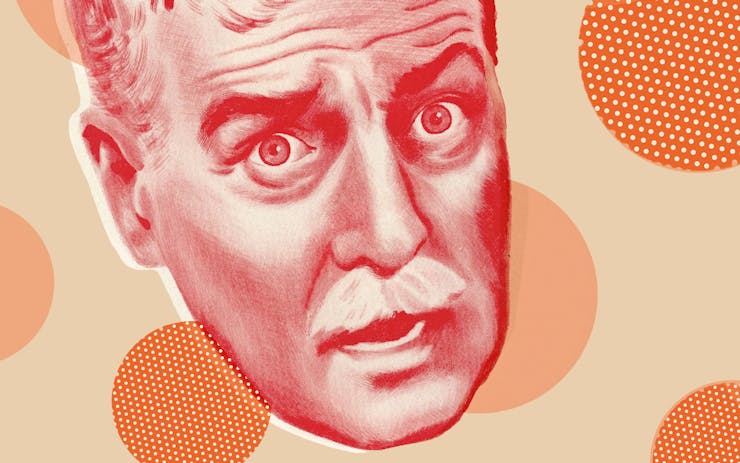Many years ago, my friend Brian and I decided to spend a blue-sky day getting stoned and listening to music in Brooklyn’s Fort Greene Park. It sounded like a brilliant plan.
Brian was a mega stoner. He could take hit after hit, and he thought everyone else could too.
It became clear that cannabis and I do not work well together. But why?
Me, I would only take one light puff. The sudden alteration was too much, too sudden, too big. But at his urging, I inhaled deeply—and once more for good luck.
This being before the iPhone and before the iPod, we brought our own Walkman CD players, which means we didn’t have the entire world of music at our fingertips, and could only listen to what we brought with us. Brian had chosen pretty, funky electronic music by The Avalanches—the perfect music for a day in the park. Uplifting, cheery, life affirming.
I had chosen the-then new Coldplay record, which had the single, “Yellow.”
Oh yeah your skin and bones
Turn into something beautiful
Do you know?
For you I’d bleed myself dry
For you I’d bleed myself dry
By the end of the second chorus Chris Martin had me sobbing. It’s just so saaaad, I cried to Brian. He loves her so much!
Brian was totally confused. He was listening to his own music, in Avalanches-land, blissed out.
He just wants to love her, I wailed. And we’re all gonna die.
It became clear that afternoon that cannabis and I did not work well together.
Caution: Meltdown ahead
When I smoke weed I get paranoid. I have panic attacks. I melt the fuck down.
This didn’t come as a great surprise. I’d seen signs over the years. Like the time I smoked up at my best friend’s house and convinced myself I was locked in the bathroom, while a group of New York music critics that I wanted to impress waited for me to come out. Centuries passed. The bathroom door in her old apartment was sticky, and when I tried to leave, I panicked because it wouldn’t open. No matter how many different ways I jiggled the lock and the doorknob, it refused to turn. My hands grew sweaty. I was sure that everyone could hear me on the other side, thinking I was a total loser because I couldn’t operate a doorknob. In hindsight, I’m pretty certain that door was perfectly easy to open. But in my panicked, paranoid state, it remained sealed forever.
Why does this happen? Why do some people freak out and others just chill out?
I tracked down some experts to find the answers.
Breaking the network
Michael Backes is the author of Cannabis Pharmacy: The Practical Guide to Medical Marijuana. Years ago, before writing the book, Backes suffered from horrible migraines. He found relief with medical cannabis, but he was frustrated by the lack of information available to most patients. So when he wasn’t working his day job—Backes was a researcher for Hollywood filmmakers —he became a self-taught expert in all things cannabis.
In some people, cannabis can break the brain's salience network in all the wrong ways.
Backes explained that there are several complex networks in the brain that serve to control certain thought processes: the executive network, the default network, and the salience network.
“The executive network is: I’m going to go to Columbia and become a doctor,” he told me. “And then there’s the default mode network: Breakfast was pretty good. My girlfriend was mean to me.” The salience network, he explained, assigns value and meaning to a person’s perceptions. “THC breaks that salience network. So what happens is the knock at the door becomes the narc at the door.” An innocent glance turns into surveillance with sinister intent: That person’s looking at me funny.
Shop highly rated dispensaries near you
Showing you dispensaries nearOr, in my case: The bathroom door won’t open!
As he explains it, a broken salience network means your brain isn’t interpreting normal things correctly. That can make some people anxious. For others, that anxiety ramps way up—“scaling all the way up into full-blown paranoia and even mild hallucinations,” he says. “It actually resembles an acute psychotic episode. They lose the ability to order their thoughts.” This is how otherwise high-functioning adults can end up in the emergency room with cannabis-induced paranoia.
What’s going on in the brain?
One of the most puzzling and complex issues surrounding cannabis is the connection, or possible correlation, between marijuana use and mental illness.
It’s generally agreed that some connection exists between cannabis and schizophrenia. Past studies indicate that cannabinoids interact with the triggering mechanism involved with schizophrenia—but exactly how isn’t yet known.
One recent study posited the idea that cannabis use actually followed the emergence of mental illness, as patients attempted to self-medicate with the mind-calming aspects of cannabis. Other studies point to the possibility of early cannabis use hastening—but not causing—the onset of schizophrenic symptoms.
Cannabis and an underlying condition
Neuroscientist Thomas Deuel, an assistant professor of Neurology at the University of Washington who practices at the Swedish Neuroscience Institute in Seattle, agrees that cannabis doesn’t cause these illnesses. Rather, he says, it can exacerbate whatever underlying condition is already present—which at the extreme end can be schizophrenia, bipolarity, and depression.
“If you’re smoking a lot of pot, you’re lowering the threshold” for schizophrenia, Deuel said. Teenagers with an underlying predisposition may hasten the onset of the disease with heavy cannabis use. “Smoking pot might set it off, but it doesn’t cause schizophrenia,” he explained. Schizophrenia typically becomes apparent in the early-to-mid-twenties, an age when many people are trying cannabis.
Sub-psychotic reactions
What about those who aren’t at risk for schizophrenia? Do some people have a greater underlying disposition to react negatively to cannabis use?
Science can’t yet tell us. Deuel says it’s not clear why some of us experience a panic attack when consuming cannabis, and others don’t. “Some people get paranoid and some people don’t,” he says. “We don’t know why.”
But there are some potential remedies for bad trips, some of which would surprise you and which I’d wish I’d known about years ago.
Pharmaceutical anxiety drugs
Deuel said that if someone comes to the ER, if they just appear to be suffering from anxiety, medical professionals might give Ativan or another type of anxiety medication in the benzodiazepines family like Valium to calm them down.
“That will calm people down in terms of anxiety and paranoia, but it’s not a real antidote,” Deuel said, adding that if a person is freaking out they should limit stimulation—a quiet, dimly lit room with friends and familiar faces is best.
A real psychotic break, he said, would require stronger drugs and may take weeks to fade.
What about CBD?
Backes’ tip is to not let the freak out happen in the first place. He suggests pre-dosing with CBD. A well-worn trope is that today’s cannabis is not your parent’s weed. With the exception of countries that bred cannabis for hashish, most cannabis grown in the last twenty years was high in THC, with little to no CBD present.
There's some good evidence that CBD basically works like the seatbelt for THC.
“There’s some evidence to back it up from some good scientists in several countries that CBD basically works like the seatbelt for THC,” Backes says. “And so what happened is when we bred all the CBD out, we basically made the car go really, really fast and removed the seatbelt.”
He recommends pre-dosing with a good amount of CBD—40 to 60 milligrams—before smoking to counteract any effects of the salience network being broken.
During the trip itself, a dose of CBD might help assuage the anxiety, but he cautions, unless you took it beforehand, “You’re kind of on the rollercoaster.”
Dr. Ethan Russo, a neurologist who is the director of research and development for the International Cannabinoids Institute based in Prague, agrees that a better-balanced plant, one with more CBD, can help, but says these should be present in the plant and be better labeled. Russo advocates for better regulation inside the industry, which he deems disappointing. ”Part of the problem is that quality control in the industry is not what it should be,” adding that, “The direction of cannabis production has been for everything to be high in THC and high in myrcene.”
Black pepper, lemon, and pine nuts: Sounds tasty
One remedy that Neil Young swears by is black peppercorns. And science seems to bear it out. Russo’s study in the British Journal of Pharmacology found that there’s synergy between cannabis and black pepper. The terpenoids in pepper and the tetrahydrocannabinol in cannabis work together in the brain to create harmony—in medical terms, “phytocannabinoid-terpenoid entourage effect.” Russo’s research includes chemicals found in lemons, pine nuts, and black pepper, and when these are present in cannabis they can work together to create a high without anxiety or paranoia.
Consider the role of terpenes in your overall experience.
“Pinene will eliminate the short term memory impairment that THC produces. Limonene can produce an anti-depressant effect, and linalool can produce an anti-anxiety effect,” he says. A plant with “some THC, some CBD, some linalool, is probably going to be much more tolerable for someone like you— and that’s a lot of people—that tend to get anxious.”
The remedies of lemonade, pepper, and eating pine nuts during or after ingesting cannabis go back thousands of years. “This is traditional knowledge that’s been passed along. Now, in this instance, we got the reports from the ancients about lemon. It was also reported in the 19th century,” Russo says.
Backes and Russo caution against viewing these as a magical solution after the fact: Though it can serve as a way to wake up from the post-pot groggy phase and may help calm you a little bit, it’s not likely to stop the trip in its tracks.
“What we want to do is avoid these bad experiences,” Russo says.





